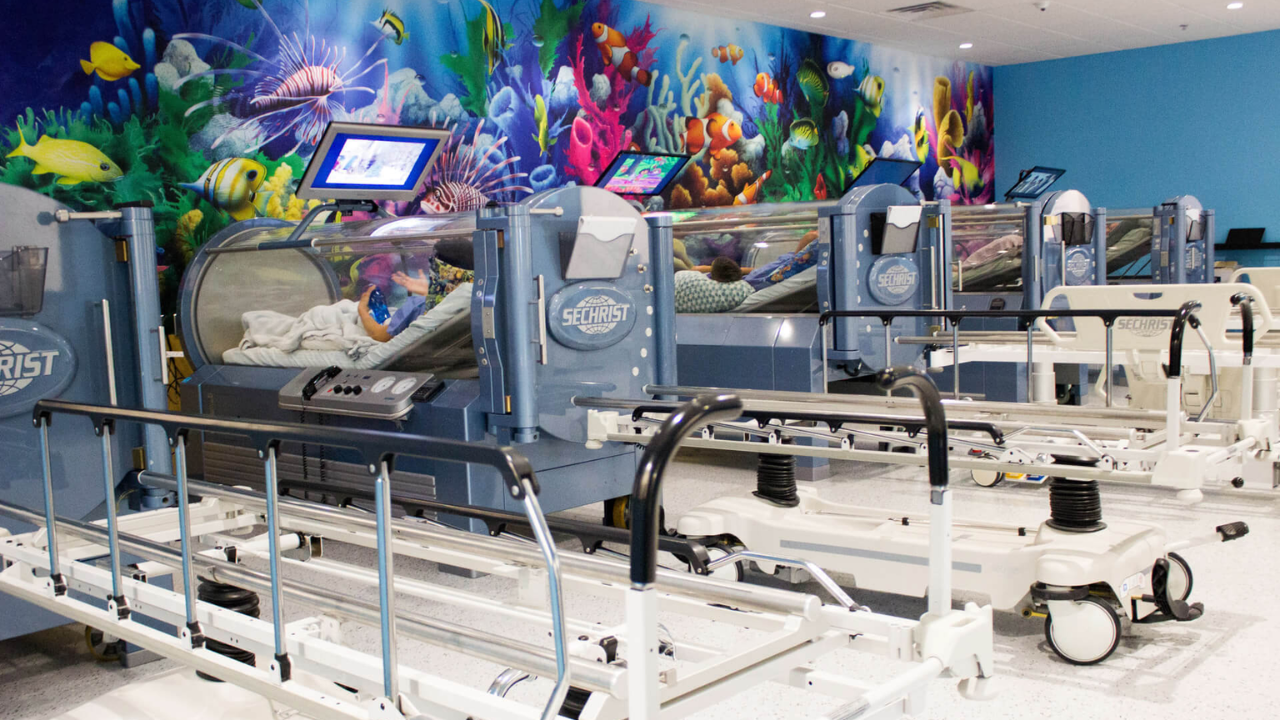Those who undergo hyperbaric oxygen therapy breathe oxygen mixes while inside a high-pressure chamber. You’re living in a space with more pressure than the average bedroom and you need a mask or hood to breathe in oxygen. This method of exercise speeds up your healing by supplying your body with additional oxygen. Newcomers to HBOT might want to understand what comprises the therapy during a session. What happens during your very first visit at a hyperbaric facility will be explained here.
St. Paul, MN, offers different ways to get hyperbaric oxygen therapy in the hyperbaric oxygen chamber. No matter if you have been here before or not, finding out what will happen during your appointment is very important.
There are Different Types Of Hyperbaric Chambers
Monoplace Chambers
A person can only enter each chamber on their own. Patients get oxygen in pressurized air by resting in special tubes. Most hospitals and clinics offer individual rooms for their patients.
Multiplace Chambers
In contrast to single-chamber ones, various chambers can hold several people at a time. They’re usually bigger and can seat multiple patients at once as they use oxygen therapy. Doctors turn to them when they need to take care of various patients at one time.
Portable Chambers
The chambers are not big which makes them easy to work in. Everyone can have these devices; they are available for use in people’s homes or small health centers. People who use oxygen therapy sometimes prefer portable ones since going to the hospital isn’t always possible.
What Can I Expect During My Very First Time in the Hyperbaric Chamber?
Understanding Hyperbaric Chamber
You will try out the hyperbaric chamber which is used to deliver extra rejuvenating oxygen to your system. The chamber has transparent sides to ensure you are not closed in and can look through it.
Preparation
Before you walk into the room, we’ll tell you the important things to know about the chamber and how to remain safe. Wear clothes that are comfortable for you and remove from your bag anything that might be harmed during the trip.
Getting into the Chamber
Once you are ready, you will be taken into a special room. A seal will go over the top and pressure in the chamber will rise until it reaches the correct level. The pressure around your ears might give you a popping sensation, just as on an airplane.
Breathing Oxygen
In the chamber, you have to put on a mask or hood and use only pure oxygen to breathe. Higher oxygen pressure in your blood makes it soak into your body more effectively. It can speed up your body’s recovery process.
Session Duration
Depending on your treatment and the condition you have, you may stay in the chamber for a longer or shorter time. An average wedding is between 60 and 90 minutes. This is a good period for relaxing, reading or playing some music.
Finishing my time as a lawmaker
As soon as the session is done, the pressure in the chamber will go back to normal. It is safe for you to come out and you might have a little pressure shift in the ear as the air levels in your body become similar.
Post-Session Instructions
When your session ends, you will be told about any extra treatment or more sessions you should consider. You need to carefully carry out these steps for the best benefits from hyperbaric oxygen therapy.
For Whom is A Hyperbaric Chamber Indicated?
Those Facing Wound Healing Problems
People with problems such as diabetic ulcers and radiation wounds may find that hyperbaric chambers help the wounds heal quicker. A larger amount of oxygen in the chamber helps tissues recover faster.
Those who suffer from Decompression Sickness
If divers ascend rapidly from a dive in deep water, they are at risk of getting “the bends.” It is caused by nitrogen bubbles that develop in the blood. By using hyperbaric oxygen therapy, it is possible to shrink these bubbles fast and restore normal blood flow.
Carbon Monoxide Poisoning affects its patients
Exposure to carbon monoxide can injure body tissues and make it difficult for the body to get oxygen. The use of hyperbaric oxygen therapy helps your body expel carbon monoxide rapidly and prevents more harm from occurring as you heal.
People experiencing Certain Infections
Certain infectious diseases, for example gas gangrene or bone infections, may be helped by hyperbaric oxygen therapy (HBOT). It achieves this by placing you in a high-pressure area that increases the oxygen you get. It prevents bacteria growth and strengthens your body’s ability to fight off the virus.
How does HBOT compare to conventional ways of giving oxygen therapy?
Pressure Difference
During HBOT, you are put inside a special chamber and you breathe pure oxygen. Extra pressure is added to this chamber, unlike most rooms. It improves oxygen uptake in the lungs better than regular oxygen therapy which involves you breathing almost the same air pressure as usual with the use of a mask or tubes.
Treatment Depth
The added pressure makes it possible for oxygen to reach parts of your body that would not get enough otherwise. It may aid healing in the damaged tissues. The oxygen reached by oxygen therapy is limited because it stays at the surface of your body.
Conditions Treated
Doctors usually apply HBOT for decompression sickness, carbon monoxide poisoning and wounds that are slow to heal. These health problems require extra oxygen to heal properly. People resort to oxygen therapy to manage breathing problems and low oxygen in the blood. An increased amount of oxygen can be useful.
Are treatments in a hyperbaric chamber risky for patients?
It is usually safe to have hyperbaric chamber sessions as long as they are carried out correctly. They use pressurized oxygen that is breathed in which may improve several medical disorders. Nevertheless, some risks can occur, for example, ear and sinus pressure, color changes in the vision or extremely uncommon oxygen toxicity. You should receive screening from a healthcare expert and obey all the guidelines before starting hyperbaric treatment.
Conclusion
Taking hyperbaric oxygen therapy can offer different advantages for health conditions and give you a unique experience for the first time. If you have problems healing, feel the pain of deep diving or are suffering from carbon monoxide poisoning, HBOT might bring you some relief and support.
Keep in mind that every session in the hyperbaric chamber allows your body to get the extra oxygen it needs to recover and revitalize. HBOT could be a helpful choice, so check it out and see if it could make a difference in your health and wellbeing.



